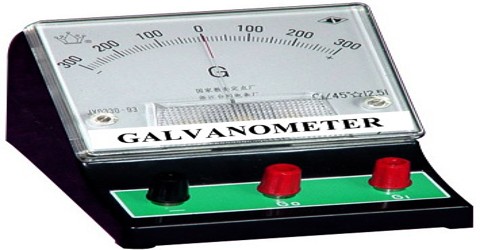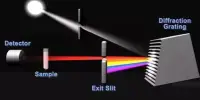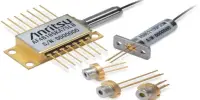Galvanometer
Definition
Galvanometer is an instrument to detect the presence of current through a circuit. It consists of a permanent magnet and coil. Current passes through the coil and causes the magnet to move; in a galvanometer the magnet is usually fixed and the coil attached to an arm or a vane or a needle whose deflection is proportional and in direction according to the polarity and magnitude of the current.
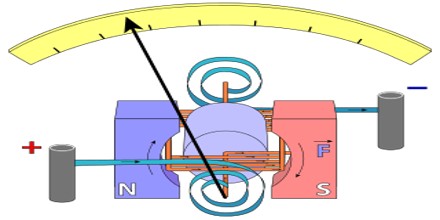
When a current passes through the coil, it experiences a deflection proportional to the charge through it. If a spring is used to restrain the coil, the deflection can be used to measure the current or a voltage. It is a simple instrument. The principle of the galvanometer is used in ammeters as well as voltmeters. It can be used as an ammeter by connecting a shunt in parallel to the coil. If the shunt is connected in series with the galvanometer coil, the galvanometer becomes a voltmeter.

Types of Galvanometer
Galvanometer is often used to refer to things other than devices which measure electrical current, such as charge or resistance; there is an amazing array of early designs for this instrument, considering their simplicity. Many of these design differences are to do with the cases that surround what is basically a twisting wire; however there is something definitively analog in their mechanism and 19th century amateur scientist in their variety.
Early galvanometers represent the extreme opposite of today’s high energy physics, which requires giant multi billion dollar apparatuses and extreme digital processing for measurement. A long way off a compass and a battery.
Thermo Galvanometer:
They can be used for the measurement of extremely small currents to a high degree of accuracy. It has practically no self-induction or capacity and can therefore be used on a circuit of any frequency.
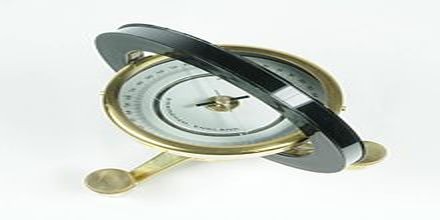
String Galvanometer:
The string galvanometer was one of the earliest instruments capable of detecting and recording the very small electrical currents produced by the human heart and provided the first practical Electrocardiogram (ECG)
Mirror Galvanometer:
A mirror galvanometer is a mechanical meter that senses electric current, except that instead of moving a needle, it moves a mirror. Mirror galvanometers were used extensively in scientific instruments before reliable, stable electronic amplifiers were available. The most common uses were as recording equipment for seismometers and submarine cables used for telegraphy.
Vibration Galvanometer:
The vibration galvanometer is used for detecting alternating currents in the frequency of its natural resonance. Most common application is a as a null indicating instrument in AC bridges and current comparators.Vibration galvanometer is a type of mirror galvanometer, usually of the type of a coil suspended in the gap of a magnet. The natural oscillation frequency of the moving parts is carefully tuned to a specific frequency; commonly 50 or 60 Hz.
Ballistic Galvanometer:
Ballistic galvanometer is a type of mirror galvanometer. It can be either of the moving coil or moving magnet type, but unlike a current-measuring galvanometer, the moving part has a large moment of inertia, thus giving it a low oscillation period. It is really an integrator measuring the quantity of charge discharged through it
Astatic Galvanometer:
The astatic galvanometer is a current measuring deviceUnlike in a simple, magnetic-needle galvanometer; the astatic galvanometer has two magnetic needles parallel to each other, but with the magnetic poles reversed. Thus the suspended (by a silk thread) needle assembly, having a null magnetic dipole moment, is not affected by the earth’s magnetic field. The lower needle is inside the current sensing coils and is deflected by the magnetic field created by the passing current.

Uses of Galvanometer
Probably the largest use of galvanometers was the D’Arsonval/Weston type movement used in analog meters in electronic equipment. Since the 1980s, galvanometer-type analog meter movements have been displaced by analog to digital converters (ADCs) for some uses. A digital panel meter (DPM) contains an analog to digital converter and numeric display. The advantages of a digital instrument are higher precision and accuracy, but factors such as power consumption or cost may still favor application of analog meter movements.
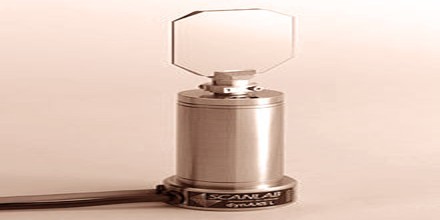
Most modern uses for the galvanometer mechanism are in positioning and control systems. Galvanometer mechanisms are divided into moving magnet and moving coil galvanometers; in addition, they are divided into closed-loop and open-loop – or resonant – types. Mirror galvanometer systems are used as beam positioning or beam steering elements in laser scanning systems. A galvanometer mechanism is used for the head positioning servos in hard disk drives and CD and DVD players. These are all of the moving coil type, in order to keep mass, and thus access times, as low as possible.
